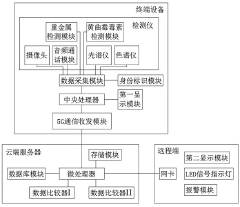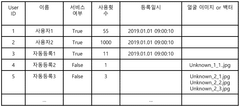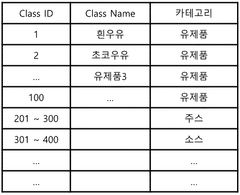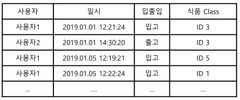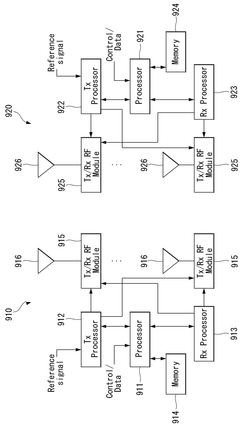How 5G UC Facilitates Real-Time Monitoring in Food Supply Chains
JUL 18, 20259 MIN READ
Generate Your Research Report Instantly with AI Agent
Patsnap Eureka helps you evaluate technical feasibility & market potential.
5G UC in Food Supply Chains: Background and Objectives
The integration of 5G Ultra-Capacity (UC) technology into food supply chains represents a significant leap forward in real-time monitoring capabilities. This technological advancement comes at a crucial time when global food supply chains face unprecedented challenges, including increasing demand, climate change impacts, and the need for enhanced traceability and safety.
5G UC, with its high-speed, low-latency, and massive connectivity features, offers a transformative solution for the food industry. It enables the deployment of advanced sensors, Internet of Things (IoT) devices, and data analytics platforms throughout the supply chain, from farm to fork. This comprehensive monitoring system aims to improve food quality, reduce waste, and enhance overall efficiency in the food supply chain.
The evolution of food supply chain monitoring has progressed from manual record-keeping to basic digital systems, and now to sophisticated real-time tracking enabled by 5G UC. This technology allows for continuous monitoring of critical parameters such as temperature, humidity, and location, ensuring food safety and quality throughout its journey.
The primary objectives of implementing 5G UC in food supply chains are multifaceted. Firstly, it aims to enhance food safety by providing real-time alerts on potential contamination or spoilage issues. Secondly, it seeks to optimize logistics and reduce food waste through precise tracking and predictive analytics. Thirdly, it aims to improve supply chain transparency, allowing consumers and regulators to trace food products back to their origins easily.
Furthermore, 5G UC technology in food supply chains is expected to drive innovation in smart packaging, automated quality control, and predictive maintenance of transportation and storage facilities. These advancements are crucial in addressing the growing complexities of global food distribution and the increasing consumer demand for fresh, safe, and sustainably sourced food products.
The implementation of 5G UC in food supply chains aligns with broader industry trends towards digitalization and sustainability. It supports the United Nations' Sustainable Development Goals, particularly those related to food security and responsible consumption. As the technology matures, it is anticipated to play a pivotal role in creating more resilient, efficient, and transparent food supply chains capable of meeting the challenges of feeding a growing global population.
5G UC, with its high-speed, low-latency, and massive connectivity features, offers a transformative solution for the food industry. It enables the deployment of advanced sensors, Internet of Things (IoT) devices, and data analytics platforms throughout the supply chain, from farm to fork. This comprehensive monitoring system aims to improve food quality, reduce waste, and enhance overall efficiency in the food supply chain.
The evolution of food supply chain monitoring has progressed from manual record-keeping to basic digital systems, and now to sophisticated real-time tracking enabled by 5G UC. This technology allows for continuous monitoring of critical parameters such as temperature, humidity, and location, ensuring food safety and quality throughout its journey.
The primary objectives of implementing 5G UC in food supply chains are multifaceted. Firstly, it aims to enhance food safety by providing real-time alerts on potential contamination or spoilage issues. Secondly, it seeks to optimize logistics and reduce food waste through precise tracking and predictive analytics. Thirdly, it aims to improve supply chain transparency, allowing consumers and regulators to trace food products back to their origins easily.
Furthermore, 5G UC technology in food supply chains is expected to drive innovation in smart packaging, automated quality control, and predictive maintenance of transportation and storage facilities. These advancements are crucial in addressing the growing complexities of global food distribution and the increasing consumer demand for fresh, safe, and sustainably sourced food products.
The implementation of 5G UC in food supply chains aligns with broader industry trends towards digitalization and sustainability. It supports the United Nations' Sustainable Development Goals, particularly those related to food security and responsible consumption. As the technology matures, it is anticipated to play a pivotal role in creating more resilient, efficient, and transparent food supply chains capable of meeting the challenges of feeding a growing global population.
Market Demand for Real-Time Food Monitoring
The demand for real-time monitoring in food supply chains has been steadily increasing, driven by several key factors. Consumers are becoming more health-conscious and demanding greater transparency in food production and distribution processes. This shift in consumer behavior has led to a growing market for technologies that can provide accurate, up-to-date information on food quality, safety, and traceability.
Food safety concerns have been a significant driver of this market demand. High-profile food contamination incidents and recalls have heightened awareness of the need for robust monitoring systems throughout the supply chain. Regulatory bodies worldwide have responded by implementing stricter food safety standards, further fueling the demand for real-time monitoring solutions.
The globalization of food supply chains has also contributed to the increased need for real-time monitoring. As food products travel longer distances and pass through multiple handlers, the risk of quality degradation and contamination increases. This complexity has created a market for technologies that can track and monitor food products from farm to fork, ensuring quality and safety at every step of the journey.
Sustainability and waste reduction initiatives have emerged as additional factors driving market demand. Real-time monitoring systems can help identify inefficiencies in the supply chain, reduce food waste, and optimize resource utilization. This aligns with growing consumer and corporate interest in environmentally responsible practices within the food industry.
The COVID-19 pandemic has further accelerated the demand for real-time monitoring in food supply chains. The crisis highlighted vulnerabilities in existing supply chain systems and emphasized the importance of resilience and adaptability. As a result, there has been increased interest in technologies that can provide real-time visibility and enable rapid response to disruptions.
E-commerce and direct-to-consumer food delivery services have also contributed to the growing market for real-time monitoring solutions. These business models require efficient logistics and quality control measures to ensure that perishable goods reach consumers in optimal condition. Real-time monitoring technologies play a crucial role in maintaining food quality and safety in these rapidly evolving distribution channels.
The integration of Internet of Things (IoT) devices and advanced data analytics has opened up new possibilities for real-time monitoring in food supply chains. This has created a market for sophisticated sensor technologies, data management platforms, and predictive analytics tools that can provide actionable insights to stakeholders throughout the supply chain.
Food safety concerns have been a significant driver of this market demand. High-profile food contamination incidents and recalls have heightened awareness of the need for robust monitoring systems throughout the supply chain. Regulatory bodies worldwide have responded by implementing stricter food safety standards, further fueling the demand for real-time monitoring solutions.
The globalization of food supply chains has also contributed to the increased need for real-time monitoring. As food products travel longer distances and pass through multiple handlers, the risk of quality degradation and contamination increases. This complexity has created a market for technologies that can track and monitor food products from farm to fork, ensuring quality and safety at every step of the journey.
Sustainability and waste reduction initiatives have emerged as additional factors driving market demand. Real-time monitoring systems can help identify inefficiencies in the supply chain, reduce food waste, and optimize resource utilization. This aligns with growing consumer and corporate interest in environmentally responsible practices within the food industry.
The COVID-19 pandemic has further accelerated the demand for real-time monitoring in food supply chains. The crisis highlighted vulnerabilities in existing supply chain systems and emphasized the importance of resilience and adaptability. As a result, there has been increased interest in technologies that can provide real-time visibility and enable rapid response to disruptions.
E-commerce and direct-to-consumer food delivery services have also contributed to the growing market for real-time monitoring solutions. These business models require efficient logistics and quality control measures to ensure that perishable goods reach consumers in optimal condition. Real-time monitoring technologies play a crucial role in maintaining food quality and safety in these rapidly evolving distribution channels.
The integration of Internet of Things (IoT) devices and advanced data analytics has opened up new possibilities for real-time monitoring in food supply chains. This has created a market for sophisticated sensor technologies, data management platforms, and predictive analytics tools that can provide actionable insights to stakeholders throughout the supply chain.
5G UC Technology: Current State and Challenges
The current state of 5G UC (Ultra-Reliable Low-Latency Communication) technology in the context of real-time monitoring for food supply chains presents both significant advancements and notable challenges. 5G UC has emerged as a promising solution for enhancing the efficiency and reliability of food supply chain monitoring, offering unprecedented levels of connectivity and data transmission capabilities.
One of the primary advantages of 5G UC is its ability to support massive machine-type communications (mMTC), enabling the deployment of a vast number of IoT devices throughout the food supply chain. This allows for comprehensive monitoring of various parameters such as temperature, humidity, and location in real-time, ensuring food quality and safety from farm to table.
The ultra-low latency feature of 5G UC, with response times as low as 1 millisecond, facilitates immediate data transmission and analysis. This is crucial for detecting and responding to potential issues in the food supply chain promptly, minimizing the risk of spoilage and contamination.
However, the implementation of 5G UC technology in food supply chains faces several challenges. The most significant hurdle is the need for extensive infrastructure development. Deploying 5G networks, especially in rural agricultural areas, requires substantial investment in hardware and network architecture.
Interoperability issues also pose a challenge, as existing systems and legacy equipment in the food industry may not be compatible with 5G UC technology. This necessitates either significant upgrades or the development of interface solutions to ensure seamless integration.
Data security and privacy concerns are paramount, given the sensitive nature of supply chain information. Implementing robust cybersecurity measures to protect against potential breaches and unauthorized access is crucial but adds complexity to the system.
The energy consumption of 5G UC networks and connected devices is another area of concern. While efforts are being made to improve energy efficiency, the increased power requirements for maintaining constant real-time connectivity could pose sustainability challenges for businesses in the food supply chain.
Standardization across the industry remains an ongoing challenge. The lack of unified protocols and standards for 5G UC implementation in food supply chains can lead to fragmentation and hinder widespread adoption.
Despite these challenges, ongoing research and development efforts are focused on addressing these issues. Innovations in network slicing, edge computing, and AI-driven optimization are being explored to enhance the efficiency and applicability of 5G UC in food supply chain monitoring.
One of the primary advantages of 5G UC is its ability to support massive machine-type communications (mMTC), enabling the deployment of a vast number of IoT devices throughout the food supply chain. This allows for comprehensive monitoring of various parameters such as temperature, humidity, and location in real-time, ensuring food quality and safety from farm to table.
The ultra-low latency feature of 5G UC, with response times as low as 1 millisecond, facilitates immediate data transmission and analysis. This is crucial for detecting and responding to potential issues in the food supply chain promptly, minimizing the risk of spoilage and contamination.
However, the implementation of 5G UC technology in food supply chains faces several challenges. The most significant hurdle is the need for extensive infrastructure development. Deploying 5G networks, especially in rural agricultural areas, requires substantial investment in hardware and network architecture.
Interoperability issues also pose a challenge, as existing systems and legacy equipment in the food industry may not be compatible with 5G UC technology. This necessitates either significant upgrades or the development of interface solutions to ensure seamless integration.
Data security and privacy concerns are paramount, given the sensitive nature of supply chain information. Implementing robust cybersecurity measures to protect against potential breaches and unauthorized access is crucial but adds complexity to the system.
The energy consumption of 5G UC networks and connected devices is another area of concern. While efforts are being made to improve energy efficiency, the increased power requirements for maintaining constant real-time connectivity could pose sustainability challenges for businesses in the food supply chain.
Standardization across the industry remains an ongoing challenge. The lack of unified protocols and standards for 5G UC implementation in food supply chains can lead to fragmentation and hinder widespread adoption.
Despite these challenges, ongoing research and development efforts are focused on addressing these issues. Innovations in network slicing, edge computing, and AI-driven optimization are being explored to enhance the efficiency and applicability of 5G UC in food supply chain monitoring.
Existing 5G UC Solutions for Food Monitoring
01 Real-time network monitoring and analysis
5G UC networks employ advanced monitoring systems to analyze network performance in real-time. These systems collect and process data from various network elements, allowing operators to identify and address issues promptly. The monitoring includes traffic patterns, signal quality, and resource utilization, enabling proactive network management and optimization.- Real-time monitoring of 5G UC network performance: Systems and methods for real-time monitoring of 5G Ultra-Capacity (UC) network performance, including data collection, analysis, and visualization of key performance indicators. This enables network operators to quickly identify and respond to issues, optimize network resources, and ensure high-quality service for users.
- Adaptive resource allocation in 5G UC networks: Techniques for dynamically allocating network resources in 5G UC networks based on real-time monitoring data. This includes adjusting bandwidth, power, and antenna configurations to optimize network performance and user experience in response to changing demand and environmental conditions.
- AI-driven predictive maintenance for 5G UC infrastructure: Implementation of artificial intelligence and machine learning algorithms to analyze real-time monitoring data from 5G UC networks. These systems can predict potential failures, schedule preventive maintenance, and optimize network performance proactively.
- Edge computing for 5G UC real-time monitoring: Utilization of edge computing technologies to process and analyze 5G UC network data closer to the source. This approach reduces latency, improves response times, and enables more efficient real-time monitoring and control of network resources.
- Security and privacy in 5G UC real-time monitoring: Development of advanced security measures and privacy-preserving techniques for real-time monitoring of 5G UC networks. These solutions ensure the protection of sensitive network data and user information while maintaining the effectiveness of monitoring and optimization processes.
02 Machine learning-based predictive maintenance
Artificial intelligence and machine learning algorithms are utilized to predict potential network issues before they occur. By analyzing historical data and current network conditions, these systems can forecast equipment failures, capacity bottlenecks, and performance degradation. This predictive approach allows for more efficient maintenance scheduling and resource allocation in 5G UC networks.Expand Specific Solutions03 Dynamic resource allocation and optimization
5G UC networks implement dynamic resource allocation techniques to optimize network performance in real-time. These systems continuously monitor network demands and automatically adjust resource distribution, including spectrum, power, and computing resources. This ensures efficient utilization of network capacity and improved quality of service for users.Expand Specific Solutions04 Edge computing for low-latency monitoring
Edge computing technologies are employed in 5G UC networks to enable low-latency monitoring and control. By processing data closer to the network edge, these systems can provide near-instantaneous analysis and response to network events. This approach is particularly crucial for applications requiring ultra-low latency, such as autonomous vehicles and industrial automation.Expand Specific Solutions05 Network slicing and service-specific monitoring
5G UC networks utilize network slicing to create virtual, isolated network segments for different services. Each slice can be monitored and managed independently, allowing for service-specific optimization and performance tracking. This approach enables tailored monitoring solutions for diverse use cases, from enhanced mobile broadband to massive IoT deployments.Expand Specific Solutions
Key Players in 5G and Food Supply Chain Tech
The 5G UC technology for real-time monitoring in food supply chains is in an early growth stage, with significant potential for expansion. The market size is expected to grow rapidly as more industries adopt this technology for improved efficiency and safety. While the technology is still evolving, it has reached a level of maturity that allows for practical implementation. Key players like LG Electronics, Samsung Electronics, and IBM are driving innovation in this space, leveraging their expertise in telecommunications and data analytics. Companies such as Jiangsu Anxin Food Safety Technology and Three Squirrels are also contributing to the development of specialized solutions for food supply chain monitoring. As the technology continues to mature, we can expect increased adoption across the food industry, leading to enhanced traceability and quality control.
International Business Machines Corp.
Technical Solution: IBM's 5G-enabled real-time monitoring solution for food supply chains leverages edge computing and AI to enhance traceability and quality control. The system utilizes IoT sensors to collect data on temperature, humidity, and location throughout the supply chain. This data is processed in real-time using 5G's ultra-low latency capabilities, allowing for immediate alerts and actions if conditions deviate from optimal ranges[1]. IBM's blockchain integration ensures data integrity and transparency, creating an immutable record of the food's journey from farm to table[2]. The solution also incorporates predictive analytics to forecast potential issues and optimize routing, reducing food waste and improving efficiency[3].
Strengths: Comprehensive end-to-end solution, strong integration of multiple technologies (5G, IoT, AI, blockchain). Weaknesses: Potential high implementation costs, reliance on widespread 5G infrastructure availability.
Nokia Technologies Oy
Technical Solution: Nokia's approach to 5G UC in food supply chain monitoring centers on their Digital Automation Cloud (DAC) platform. This private wireless networking solution provides seamless connectivity across various environments, from production facilities to transportation networks. Nokia's system utilizes a combination of 5G and edge computing to enable real-time data processing and analytics at each stage of the supply chain[7]. The solution incorporates advanced sensor technologies, including spectral imaging for non-invasive food quality assessment. Nokia's platform also features AI-driven predictive maintenance for monitoring equipment, reducing downtime and ensuring consistent data collection[8]. The company emphasizes scalability, allowing businesses to start with smaller deployments and expand as needed. Additionally, Nokia's solution includes robust APIs for integration with existing enterprise systems and third-party applications[9].
Strengths: Comprehensive private networking solution, strong focus on scalability and integration. Weaknesses: Potential complexity in implementation, may require significant infrastructure investment.
Core Innovations in 5G UC for Supply Chains
Food safety monitoring system based on 5G and monitoring method thereof
PatentInactiveCN113329088A
Innovation
- A food safety monitoring system based on 5G is designed, including remote end, cloud server and terminal equipment. Real-time collection, analysis and alarm of detection data are realized through 5G communication, ensuring that food manufacturers and regulatory authorities can know food substandard information in a timely manner and take measures.
Method and apparatus for providing user-customized food information
PatentWO2020235715A1
Innovation
- A method and device that utilize face and food recognition technologies, combined with inventory management, to provide personalized food information by classifying users and tracking food entry/exit history, allowing for intuitive access to preferred items and nutritional insights, and enabling communication through 5G wireless communication systems for sharing information between users.
Regulatory Framework for 5G in Food Industry
The regulatory framework for 5G in the food industry is a critical aspect of implementing real-time monitoring in food supply chains. As 5G technology continues to revolutionize various sectors, including agriculture and food production, governments and regulatory bodies are developing comprehensive guidelines to ensure its safe and effective deployment.
At the forefront of these regulations is the need to address spectrum allocation and licensing for 5G networks in food-related environments. Regulatory bodies are working to designate specific frequency bands for use in agricultural and food processing facilities, ensuring minimal interference with existing communication systems and equipment. This allocation process takes into account the unique requirements of food supply chain monitoring, such as the need for low-latency connections and high data throughput.
Safety standards for 5G equipment in food production environments are another crucial component of the regulatory framework. These standards encompass electromagnetic compatibility, radiation exposure limits, and hygiene requirements for devices used in food processing areas. Regulatory agencies are collaborating with industry experts to develop guidelines that balance the benefits of 5G technology with the stringent safety requirements of the food industry.
Data privacy and security regulations play a significant role in shaping the 5G landscape for food supply chains. As real-time monitoring systems collect and transmit vast amounts of sensitive information, regulators are implementing strict protocols for data handling, storage, and transmission. These regulations aim to protect proprietary information, consumer privacy, and food safety data from unauthorized access or cyber threats.
Interoperability standards are being established to ensure seamless integration of 5G-enabled devices and systems across different stages of the food supply chain. These standards promote compatibility between various monitoring tools, sensors, and data management platforms, facilitating end-to-end traceability and efficient information exchange.
Environmental impact assessments and sustainability guidelines are also being incorporated into the regulatory framework. These measures address concerns about the energy consumption of 5G networks and the potential ecological effects of widespread sensor deployment in agricultural settings. Regulators are encouraging the development of energy-efficient 5G solutions and environmentally friendly monitoring devices.
Compliance and certification processes are being streamlined to accelerate the adoption of 5G technology in the food industry. Regulatory bodies are establishing clear pathways for manufacturers and service providers to obtain necessary approvals for their 5G-enabled products and solutions. This includes guidelines for testing, documentation, and ongoing compliance monitoring.
As the regulatory landscape continues to evolve, international cooperation and harmonization efforts are underway to align standards across different regions. This global approach aims to facilitate cross-border trade and ensure consistent food safety monitoring practices worldwide, leveraging the capabilities of 5G technology to enhance the resilience and transparency of global food supply chains.
At the forefront of these regulations is the need to address spectrum allocation and licensing for 5G networks in food-related environments. Regulatory bodies are working to designate specific frequency bands for use in agricultural and food processing facilities, ensuring minimal interference with existing communication systems and equipment. This allocation process takes into account the unique requirements of food supply chain monitoring, such as the need for low-latency connections and high data throughput.
Safety standards for 5G equipment in food production environments are another crucial component of the regulatory framework. These standards encompass electromagnetic compatibility, radiation exposure limits, and hygiene requirements for devices used in food processing areas. Regulatory agencies are collaborating with industry experts to develop guidelines that balance the benefits of 5G technology with the stringent safety requirements of the food industry.
Data privacy and security regulations play a significant role in shaping the 5G landscape for food supply chains. As real-time monitoring systems collect and transmit vast amounts of sensitive information, regulators are implementing strict protocols for data handling, storage, and transmission. These regulations aim to protect proprietary information, consumer privacy, and food safety data from unauthorized access or cyber threats.
Interoperability standards are being established to ensure seamless integration of 5G-enabled devices and systems across different stages of the food supply chain. These standards promote compatibility between various monitoring tools, sensors, and data management platforms, facilitating end-to-end traceability and efficient information exchange.
Environmental impact assessments and sustainability guidelines are also being incorporated into the regulatory framework. These measures address concerns about the energy consumption of 5G networks and the potential ecological effects of widespread sensor deployment in agricultural settings. Regulators are encouraging the development of energy-efficient 5G solutions and environmentally friendly monitoring devices.
Compliance and certification processes are being streamlined to accelerate the adoption of 5G technology in the food industry. Regulatory bodies are establishing clear pathways for manufacturers and service providers to obtain necessary approvals for their 5G-enabled products and solutions. This includes guidelines for testing, documentation, and ongoing compliance monitoring.
As the regulatory landscape continues to evolve, international cooperation and harmonization efforts are underway to align standards across different regions. This global approach aims to facilitate cross-border trade and ensure consistent food safety monitoring practices worldwide, leveraging the capabilities of 5G technology to enhance the resilience and transparency of global food supply chains.
Environmental Impact of 5G-Enabled Supply Chains
The integration of 5G technology in food supply chains has the potential to significantly reduce environmental impacts through improved efficiency and reduced waste. Real-time monitoring enabled by 5G Ultra-Capacity (UC) networks allows for precise tracking of food products throughout the supply chain, minimizing spoilage and optimizing transportation routes.
One of the primary environmental benefits of 5G-enabled supply chains is the reduction of food waste. With real-time temperature and humidity monitoring, perishable goods can be better managed, ensuring they reach consumers in optimal condition. This reduction in waste translates to lower greenhouse gas emissions associated with food production, transportation, and disposal.
5G UC facilitates more efficient logistics and transportation planning. Real-time data on traffic conditions, weather, and vehicle performance allows for dynamic route optimization, reducing fuel consumption and emissions. Additionally, the improved connectivity enables better coordination between different stages of the supply chain, minimizing idle time and unnecessary transportation.
The implementation of 5G technology in food supply chains also supports the adoption of precision agriculture practices. Real-time monitoring of soil conditions, crop health, and weather patterns allows farmers to optimize resource use, reducing water consumption and minimizing the application of fertilizers and pesticides. This not only reduces the environmental footprint of food production but also helps preserve biodiversity and soil health.
Furthermore, 5G-enabled supply chains can enhance traceability and transparency, promoting sustainable practices throughout the food industry. Consumers can access detailed information about the origin and journey of their food, encouraging more environmentally conscious purchasing decisions and supporting sustainable producers.
The improved data collection and analysis capabilities offered by 5G networks also contribute to more accurate demand forecasting. This helps reduce overproduction and associated resource waste, aligning supply more closely with actual demand. As a result, the overall environmental impact of the food supply chain is minimized.
While the implementation of 5G technology in supply chains does have its own environmental considerations, such as increased energy consumption for network infrastructure, the net environmental impact is expected to be positive. The efficiency gains and waste reduction potential outweigh the additional energy requirements, especially as renewable energy sources become more prevalent in powering network infrastructure.
One of the primary environmental benefits of 5G-enabled supply chains is the reduction of food waste. With real-time temperature and humidity monitoring, perishable goods can be better managed, ensuring they reach consumers in optimal condition. This reduction in waste translates to lower greenhouse gas emissions associated with food production, transportation, and disposal.
5G UC facilitates more efficient logistics and transportation planning. Real-time data on traffic conditions, weather, and vehicle performance allows for dynamic route optimization, reducing fuel consumption and emissions. Additionally, the improved connectivity enables better coordination between different stages of the supply chain, minimizing idle time and unnecessary transportation.
The implementation of 5G technology in food supply chains also supports the adoption of precision agriculture practices. Real-time monitoring of soil conditions, crop health, and weather patterns allows farmers to optimize resource use, reducing water consumption and minimizing the application of fertilizers and pesticides. This not only reduces the environmental footprint of food production but also helps preserve biodiversity and soil health.
Furthermore, 5G-enabled supply chains can enhance traceability and transparency, promoting sustainable practices throughout the food industry. Consumers can access detailed information about the origin and journey of their food, encouraging more environmentally conscious purchasing decisions and supporting sustainable producers.
The improved data collection and analysis capabilities offered by 5G networks also contribute to more accurate demand forecasting. This helps reduce overproduction and associated resource waste, aligning supply more closely with actual demand. As a result, the overall environmental impact of the food supply chain is minimized.
While the implementation of 5G technology in supply chains does have its own environmental considerations, such as increased energy consumption for network infrastructure, the net environmental impact is expected to be positive. The efficiency gains and waste reduction potential outweigh the additional energy requirements, especially as renewable energy sources become more prevalent in powering network infrastructure.
Unlock deeper insights with Patsnap Eureka Quick Research — get a full tech report to explore trends and direct your research. Try now!
Generate Your Research Report Instantly with AI Agent
Supercharge your innovation with Patsnap Eureka AI Agent Platform!
